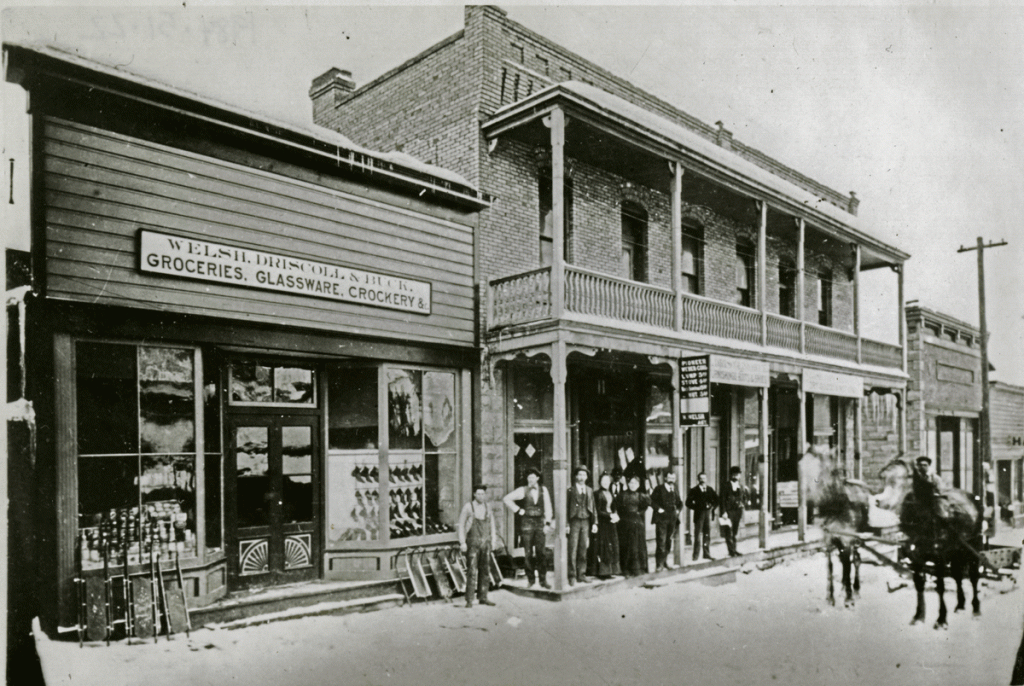This is the third article in a series on Prohibition in Park City.
“The prohibition law … [is] making more lawbreakers than ever were made in the palmiest days of the open saloon,” wrote the Park Record in September of 1921.[1] By 1932, they expanded that sentiment to believe that Prohibition “is making lawbreakers of good men daily.”[2]
With any law comes the ability to commit a crime. In some cases, having a law creates a black market for something that was outlawed. Examples include the prohibition of alcohol, the ban on non-medicinal drugs (and even certain medicinal drugs outside of a prescription), bans on certain weapons, prohibition on selling exotic animals, and more. Prohibition, infamously, gave rise to many gangsters, especially in big cities – like Al Capone in Chicago. But Park City, too, was a hotbed for running alcohol.
Alcohol was being snuck into Park City in a variety of ways. A September 1918 report in the Park Record announced the discovery of whiskey being shipped in luggage trunks via the Union Pacific Railroad line into Park City.[3] Five years later, a woman was arrested after exiting a train with a suitcase full of “juice.”[4] More commonly, bootleggers would try to bring alcohol into town by automobile. One May 1919 article in the Park Record noted the arrest and fines for nearly a dozen men in the Park City area, all having booze in their cars or trucks.[5]
Having other items shipped in was a gamble too. Things like grapes, or large amounts of sugar were suspicious to the police and government prohibition agents. Soft drink parlor owners couldn’t just ship those things to their businesses for underground saloons. Former Parkite Egidio Fontana relayed in an oral history that his family had a tunnel that ran from the Welsh, Driscoll, and Buck general store underneath Main Street to his family’s Park Utah Hotel and Venice Club across the street. The grocer would receive the grapes, sugar, and other ingredients to make wine, whiskey, or moonshine; Then they would be sent underground to the hotel basement, which had a huge boiler that could support running several stills.[6]

Credit: Park City Historical Society & Museum, PCHS Slide Collection
Egidio then loaded up a wagon with the completed booze and distributed it to the different parlors that wanted to risk selling it. Many of the former saloons still sold alcohol because, according to Egidio, “when the men come down from… the mines… wet, cold – they wanted a shot of whiskey on time…. Prohibition or not.” People from nations like Austria, Germany, Italy especially were more likely to ignore prohibition, as drinking was part of their culture.[7] The Fontana operation was shut down in January 1928.[8]
Other Parkites had stills up in the hills surrounding town. Mel Fletcher recalled in an oral history that he and friends were hiking one day when they came across a pipe running out of a stream. They followed the pipe until “one of the biggest, meanest-looking guys I ever saw in my life come up out of the brush….” He asked what they were doing. When they responded that they were just hiking, the man responded, “Well, you better hike goin’ the other direction.” They found out from some older kids that they had almost closed in on a still.[9] There was even a still out on the Rasmussen property near Gorgoza.[10] Other stills and booze operations were supplying the soft-drink parlors and households all across and around town.[11]
One Park City area farm caught making booze several times was that of Mrs. Johanna Clark. Her son Arthur and a friend were making the booze, but she tried to take the fall for them. Despite not being involved directly, the operation was on her property, so she was sentenced to six months in jail with the judge telling her: “The only things you seem to raise on that farm of yours are stills.”[12]
Park City was as lively with law-breaking as any place during Prohibition, though it at least avoided the violence that rocked large cities with heavy Mafia and gang presences. In at least one man’s case, he tried start making to support his family after being laid off from the mines, but most became distillers or bootleggers to make money.[13] Because crime paid during Prohibition.
Next week, read about one of Park City’s most prolific bootleggers. Watch the Museum’s most recent lecture – about Prohibition – on our YouTube Channel.
[1] “General Items.” Park Record, September 9, 1921.
[2] “Stroller Notices.” Park Record, April 15, 1932.
[3] “Nobody Called for the Trunks.” Park Record, September 13, 1918.
[4] “A Suitcase Full.” Park Record, March 2, 1923.
[5] “Bootleggers Caught.” Park Record, May 16, 1919.
[6] Hampshire, David. Egidio Louie Fontana Oral History, May 30, 1990. Pages 3-6. Park City Museum Oral History Collection.
[7] Ibid.
[8] “Two Sills Are ‘Stilled’.” Park Record, January 27, 1928.
[9] Mel Fletcher Oral History. Page 10. Park City Museum Oral History Collection.
[10] “Park Float.” Park Record, September 17, 1926.
[11] “Big Still Found and Destroyed.” Park Record, February 25, 1927 and “Officers of the Law Have Busy Week.” Park Record, March 4, 1927
[12] “Woman Given Jail Sentence.” Park Record, December 13, 1929.
[13] “Another One Landed.” Park Record, December 2, 1927.